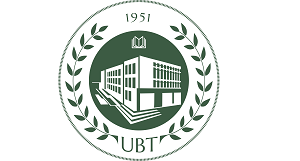ALMA AHMETI1, SPIRO GRAZHDANI1, ADRIANA ZYFI1
1Department of Physics and Applied Sciences, Faculty of Forestry Sciences, Agricultural University of Tirana, Albania
*Corresponding author e-mail: aahmeti@yahoo.com
Abstract:
The impact of production risks and risk aversion on crop choices is a major research question in agricultural economics. Portfolio optimization is an adequate tool to find optimal crop management options in adapting to climate change. The risk farmers have to face can be caused by different sources. In our study, we focus on the risk arising from unknown weather conditions. Therefore, we developed stochastic climate change scenarios for the Korça region. The climate change scenarios have been statistically tested to assure physical and spatiotemporal consistencies. Two portfolio models have been applied in the time periods 2008-2020, 2021-2030 and 2031-2040: a traditional non-linear mean-variance (E-V) model and a model using the Conditional Value at Risk (CVaR) as risk metric. Investigated crops are corn, winter wheat, sunflower and spring barley with different crop management alternatives. Minimum tillage appears in all portfolios. We found a decreasing share of winter wheat that gets partially substituted by sunflower over the time periods. When including environmental constraints (soil organic carbon content, nitrate leaching) the reverse effect on the resulting portfolio shares is observed with corn being included. The E-V model reveals more diversification with respect to the crops, whereas the CVaR model shows more diversification with respect to crop management options. Another result is that minimum tillage always appears in the optimal portfolios, however, with different management alternatives with respect to straw harvesting and fertilization. In contrast, irrigation is not part of the optimal portfolio, as the increasing revenues through higher crop yields cannot compensate the higher production costs. However, the optimal portfolio results strongly depend on the assumptions made with respect to irrigation management (i.e. fixed irrigation amounts are taken into account) and the calculation of production costs (e.g. level of water price in case of irrigation). This study, therefore contributes to the literature in applying a portfolio optimization approach (CVaR) to analyze the impact of climate change on crop production risks and consequently on the choices of crops and crop management.
Keywords: climate change; conditional value at risk; mean-variance (E-V) model; meteorological consistency; portfolio optimization model; risk management.

